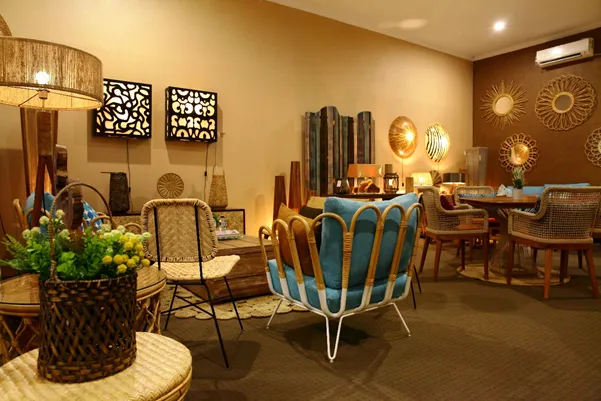Furniture is an essential element of human life, playing both functional and aesthetic roles in our daily environments. From the earliest wooden stools to intricate modular systems in modern homes and offices, furniture has evolved in design, material, and production methods. It represents culture, technology, and lifestyle, while also shaping comfort, productivity, and spatial utilization. Today, furniture is not merely about practicality; it is a statement of identity and values. As the global market continues to grow and diversify, the industry sees a rise in sustainability awareness, innovation in materials, and a shift in manufacturing powerhouses—most notably Indonesia.
The Concept and Purpose of Furniture
Furniture encompasses all movable objects intended to support various human activities, such as seating, eating, sleeping, and storage. From chairs, tables, and beds to cabinets, desks, and decorative units, each piece serves specific purposes. Beyond utilitarian function, furniture contributes to interior design, enhancing ambiance and expressing personal taste or corporate image.
The evolution of furniture has been deeply influenced by sociocultural shifts, technological advancements, and economic trends. In ancient civilizations, furniture denoted social status, often intricately carved and made of rare materials. In contrast, the modern age emphasizes minimalism, functionality, and modularity. Furniture can now be mass-produced yet still personalized, thanks to digital fabrication, modular designs, and AI-assisted customization.
The Diversity of Furniture Categories
The world of furniture is vast, and it spans various categories based on usage, materials, locations, and design themes. Broadly, furniture falls into indoor and outdoor segments. Indoor furniture covers living room sets, bedroom suites, dining tables, wardrobes, bookshelves, and home office installations. Outdoor furniture, on the other hand, is designed to withstand weather exposure and typically includes garden chairs, loungers, patio sets, and gazebos.
There is also a distinct segmentation based on purpose—residential furniture for homes, hospitality furniture for hotels and restaurants, commercial furniture for offices and public areas, and institutional furniture for schools, libraries, and healthcare facilities. The design varies based on ergonomic principles, durability needs, and aesthetic goals.
Each segment serves its unique market and often follows different material standards, certifications, and safety regulations. A hospital bed, for instance, must meet medical-grade standards, while a hotel room table must adhere to hospitality industry durability and fire-safety guidelines.
Materials Used in Furniture Making
One of the most defining characteristics of any piece of furniture is its material composition. Materials impact aesthetics, weight, durability, cost, and environmental footprint. The primary materials used in furniture production include wood, metal, plastic, glass, rattan, bamboo, leather, and increasingly, composite and recycled materials.
Wood is perhaps the most traditional and versatile material in furniture making. Solid wood like teak, oak, walnut, and mahogany are prized for their natural grain, longevity, and sturdiness. Teak, for example, is highly resistant to rot and insects, making it ideal for both indoor and outdoor furniture. Engineered woods such as plywood, MDF (medium-density fiberboard), and particleboard are also widely used due to their affordability and uniformity.
Metal is often employed for structural components, frames, and modern industrial-style designs. Stainless steel, aluminum, iron, and brass are popular choices. They offer durability, minimal maintenance, and sleek aesthetics. The growing trend of mixing metal with wood or glass gives rise to hybrid furniture pieces that embody strength and sophistication.
Plastic, including polypropylene and acrylics, is favored for affordability and ease of shaping. It is especially common in contemporary and children’s furniture due to its versatility and vibrant color options. With the advancement of polymer technologies, high-quality plastics now offer better longevity and recyclability.
Glass is mostly used for tabletops, cabinet doors, and decorative elements. While fragile, tempered glass adds a modern and luxurious touch when used thoughtfully. Combined with metal or wood, glass can elevate the elegance of a piece.
Rattan and bamboo have garnered global attention due to their renewable nature and organic charm. They are flexible, lightweight, and suitable for both rustic and boho-inspired designs. Natural rattan furniture is especially popular in warmer climates, while synthetic rattan has made it viable for all-weather outdoor setups.
Leather and fabric are used for upholstery, enhancing comfort and elegance. While leather denotes luxury and durability, fabrics offer warmth, a variety of textures, and color adaptability. Innovations in microfiber, velvet, and performance textiles now allow easy maintenance and resistance to spills or wear.
Recycled and composite materials have become increasingly significant with the rise of sustainability. Reclaimed wood, recycled metals, bio-based plastics, and bamboo composites offer eco-friendly alternatives while maintaining aesthetic and structural integrity.
Evolution of Design Aesthetics
Furniture design is a mirror of prevailing art, culture, and societal values. Throughout history, furniture design transitioned from ornamental to utilitarian to minimal. In ancient Egypt and Rome, furniture was decorative and symbolic. The Renaissance period introduced elegance through curves and embellishments. The Industrial Revolution catalyzed the mass production of furniture, creating affordability and consistency.
Modernist movements in the 20th century, such as Bauhaus and Scandinavian design, emphasized functionality, clean lines, and democratization of design. Contemporary furniture now explores fluid forms, space-saving concepts, and technological integration. Smart furniture with built-in charging ports, ergonomic adjustments, and IoT connectivity represents the future.
Sustainability has added a new dimension to furniture design. More designers now explore upcycled materials, biodegradable substances, and modular repair-friendly constructions. The fusion of traditional craftsmanship with futuristic innovation is setting new trends in furniture aesthetics.
The Global Furniture Industry
The furniture industry is a multibillion-dollar global enterprise encompassing raw material suppliers, manufacturers, designers, wholesalers, retailers, and logistics. As urbanization and population growth increase demand for living spaces and work environments, the furniture sector continues to expand.
Asia dominates global production, with China, Vietnam, and Indonesia as major players. Europe and North America are primary consumers, driven by residential, commercial, and institutional needs. E-commerce has revolutionized furniture retail, allowing customers to browse and purchase online with delivery and installation services. The rise of D2C (direct-to-consumer) brands has also reshaped traditional supply chains.
Customization, on-demand production, and augmented reality (AR) tools for virtual furniture placement are shaping consumer expectations. Green certifications, such as FSC (Forest Stewardship Council) and BSCI (Business Social Compliance Initiative), are becoming essential for environmentally-conscious markets.
Indonesia as The World’s Furniture Workshop
Indonesia has earned global recognition as one of the top furniture exporters in the world. Its rich natural resources, artisanal craftsmanship, and strategic location contribute to its leadership in the industry. From rustic teakwood outdoor collections to intricately woven rattan chairs and handcrafted indoor suites, Indonesian furniture is celebrated for its quality, design, and sustainability.
Teak, one of the country’s most valuable wood resources, is central to Indonesian furniture exports. With state-regulated plantations and SVLK (Timber Legality Assurance System) certification, Indonesia ensures responsible forest management and legal harvesting. This transparency has made Indonesian teak furniture highly sought-after by international buyers seeking authenticity and sustainability.
Apart from wood, Indonesia is globally known for its rattan furniture, especially from regions such as Cirebon, which is often dubbed the capital of rattan craftsmanship. The availability of natural rattan and the skilled labor force make Indonesia a hub for boho-style and coastal-style furniture. In recent years, the country has also advanced in synthetic rattan production, meeting demand for all-weather patio and garden furnishings.
Indonesia’s competitive advantage also lies in its human capital. The legacy of woodworking passed down through generations enables a level of detail and durability difficult to replicate elsewhere. From carving and bending to finishing and assembling, Indonesian artisans combine traditional skills with modern machinery to deliver high-end furniture at scale.
The government of Indonesia actively supports the sector through trade shows, export promotion programs, and incentives for sustainable practices. Events such as IFEX (Indonesia International Furniture Expo) attract global buyers and showcase the country’s capabilities across residential, hospitality, and commercial furniture segments.
As international buyers increasingly seek ethical sourcing, Indonesia’s compliance with global certifications such as FSC, SVLK, and BSCI further strengthens its position. Many manufacturers now also pursue ISO certifications and align with global standards for social and environmental responsibility.
The Rise of Indonesian Furniture in the Digital Era
In the past, Indonesian furniture was sold primarily through trade shows, international dealers, and export distributors. Today, digital transformation has broadened the reach of manufacturers through websites, B2B marketplaces, and virtual catalogs. This digitization allows global buyers to engage directly with manufacturers, request samples, and collaborate on custom designs remotely.
The digital shift has empowered small and medium enterprises (SMEs) across Indonesia to market their products globally. Manufacturers from Jepara, Cirebon, Semarang, and Bali now operate with digital portfolios, integrated logistics, and CRM systems. Social media and SEO-optimized websites have become critical tools in securing international partnerships and wholesale orders.
Moreover, Indonesian manufacturers are now investing in design innovation and brand development. Rather than being mere OEMs (Original Equipment Manufacturers), many now build private label collections and design-forward catalogs. With an increasing focus on storytelling, provenance, and lifestyle branding, Indonesian furniture is no longer just a product—it’s a cultural export.
Sustainability and Ethical Manufacturing
Indonesia’s leadership in furniture manufacturing also comes with a responsibility to maintain ecological balance. Many factories now use solar energy, water treatment systems, and VOC-free finishing. Waste management, reforestation, and reusing offcuts are becoming standard practices in certified facilities.
The government and industry associations collaborate to ensure that exports comply with European Union Timber Regulation (EUTR) and other international regulations. Sustainable sourcing of materials, fair wages, and safe working conditions are crucial pillars of Indonesia’s ethical furniture production.
Several manufacturers also support local communities through education programs, healthcare access, and job creation. In many areas, furniture production is a primary source of income, helping reduce urban migration and preserve local crafts.
The future of furniture manufacturing in Indonesia is rooted in a balance between heritage and innovation. While preserving age-old techniques, the industry must continue embracing digital tools, AI-powered production planning, and environmentally sensitive materials to remain competitive.
Furniture Materials, Design and Manufacturer
Furniture is more than a product—it is a blend of history, culture, design, and material mastery. Its presence in our lives is both functional and emotional. As the world seeks furniture that aligns with sustainability, aesthetics, and ethical values, materials and manufacturing origins become critical factors in purchasing decisions.
Indonesia, with its abundant resources, skilled artisans, and forward-looking industry, stands tall as a global furniture leader. From tropical teak to intricately woven rattan, the country offers a diverse range of designs that cater to global markets. As it continues to integrate tradition with technology, Indonesia’s furniture industry is poised for sustained growth, innovation, and recognition.
For international buyers, sourcing from Indonesia means more than acquiring furniture—it means becoming part of a story that blends nature, craftsmanship, and sustainable ambition. In a rapidly evolving world, that story will continue to shape spaces and inspire lifestyles around the globe.

